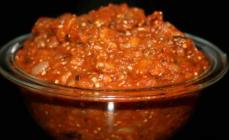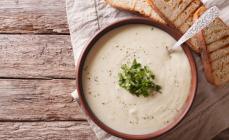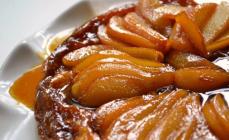Brief certificate of food additive E133 (blue shiny FCF)
Purpose: food coloring
Origin of additive: synthetic
Color: Blue (with a reddish tint)
Allowed In Russia (Customs Union of EAEU), Ukraine, EU, Australia, New Zealand
Potentially dangerous to health, allergen (especially strongly affects people suffering from asthma)
Scientific research E133 continues until now
Names of food additive E133, found in the Russian Federation:
- Blue brilliant FCF.
- Diamond Blue FCF.
- Diamond blue FCF.
- E-133.
International synonyms punch 4r:
- BRILLIANT BLUE FCF.
- Blue 1.
- CI (1975) No. 42900.
- CI Food Blue 2
- FD & C BLUE NO.1
Overall characteristic of food dye E133
E133 dye is a synthetic nutritional supplement of blue (with a red tint), which is used as in food Industryand in other sectors of the national economy. The initial raw material for E133 is a coal tar, and the dye itself is a powder or granulate, which is practically not dissolved in water.
During the production process, the dye blue brilliant FCF is often mixed with other dyes, resulting in green, purple, brown, black and other colors necessary for coloring of certain substances.
In addition to the food industry, the E133 dye is used in the manufacture of medicines, decorative and hygienic cosmetics, cleaning products, as well as in the textile industry - to give the desired colors with products from wool and silk.
Food additive E133. Impact on the body: harm and benefit
Today, the E133 food dye is permitted in many states in the world, including Russia (Customs Union of the EAEU), Ukraine and the European Union. However, this does not mean that this nutritional supplement does not have any negative impact on the human body.
To date, it is reliably known that E133 may harm people who suffer from asthma (sometimes the dye causes the attacks of suffocation), as well as those who have hypersensitivity to aspirin (acetylsalicylic acid).
At the same time, convincing evidence of its toxicity and carcinogenicity also does not yet exist.
In the process of digestion, the diamond Blue FCF is practically not absorbed - about 95% of the dye passes the transit. The remaining 5% for the most part collapsed and give the excreta greenish tint.
It should also be noted that the substance that is very similar to the Brilliant Blue FCF dye - Brilliant Blue G - showed interesting results in the treatment of spinal cord injuries in rats. True, before research on people, the case has not yet come due to the fact that Brilliant Blue G is too cheap and does not represent a commercial interest for potential investors.

The recommended daily consumption of E133 eating dye is limited. The specific value is periodically revised due to the accumulation of statistical data, as well as the emergence of new research data relating to this additive.
Products that use synthetic food dye E133
The list of foods in which the E133 dietary supplement has been seen includes:
- different types of desserts
- ice cream
- canned fruits and vegetables
- without alcoholic beverages
- sweets
- dry breakfast
Finally
E133 food dye is a "dark horse", which already in the near future can be recognized as a very effective drug. However, it can easily ban it to use in the food industry (if suddenly there will be dangerous side effects with time). Therefore, a decision on its security to each of us will have to be taken independently. However, as always ...
Synthetic food dyes - representatives of several classes of organic compounds: Azocrase (Tartrazine - E102; Yellow "Sunny Sunset" - E110; Karmuzin - E122; Punchy 4R-E1124; black shiny - e151); Triarilmethane dyes (blue patented V-E131; blue shiny - E133; green S - E142); quinoline (yellow quinoline - E104); Indigoid (Indigocarmin - E132). All these compounds are well soluble in water, most forms insoluble complexes with metal ions and are used in this form to dye powdered products. Synthetic dyes have significant technological advantages compared to most natural dyes. They give bright, easily reproducible colors and are less sensitive to various types of exposure to which the material is subjected during the process flow.
[Nechaev A.P., Traubenberg S.E., Kochetkova A.A, Food chemistry, 2003]
When using dyes, it should be remembered that they lose some of their painting when painting and stored food products. Synthetic dyes of triphenylmethane rows (E131, E133, E142) in the process of caramel staining are discolored to 10%, during storage - up to 18 %. In general, synthetic dyes are sufficiently stable, the exception is the dyes of triphenylmethane rows, which can be discolored during the storage of alcoholic beverages in the light, and the E132 indigoide dye, which is unstable in drinks using invert sugar. The maximum allowed dosage of synthetic food dyes in an individual form or in total in mixtures is 500 g / t, the recommended - 10-50 g / t of the finished food product depending on the dye and the type of product painted. For punching 4R Maximum dosage 50 g / t finished products. Beforeuse synthetic dyes, you need to make sure of their toxicological safety.
[Educational materials "Food concentrates and supplements of processing products" Kasymov S.K., Ph.D., 2013]
Characteristics of the main synthetic dyes
|
The code |
Name |
Water color solo |
DSD, mg / kg body weight (JECFA) |
|
|
E102. |
Tartrazine |
Yellow |
||
|
E104 |
Yellow quinoline |
Lemon yellow |
10,0 |
|
|
E110 |
Yellow "Sunny Sunset"FCF. |
Orange |
||
|
E122. |
Carmuzin (Azorubin) |
- // - |
Crimson |
|
|
E124 |
Ponova 4 R (Punchovaya 4 R) |
Red |
||
|
E131 |
Blue patentedV. |
Blue |
Not installed |
|
|
E132. |
Indigocarmin |
- // - |
Blue |
|
|
E133 |
Blue shinyFCF. |
- // - |
Blue |
12,5 |
|
E151 |
Black shinyBN. |
Purple |
Stability of the main synthetic dyes
|
The code |
Name |
Color index c. I. |
Light resistance |
Heat resistance |
Bone sour toast |
Food resistance to fruit acids |
Alkali-resistance |
|
E102. |
Tartrazine |
19140 |
|||||
|
E104 |
Yellow quinoline |
47005 |
|||||
|
E110 |
Yellow "Sunny sunset »FCF. |
15985 |
± * |
||||
|
E122. |
Carmuzin (Azorubin) |
14720 |
|||||
|
E124 |
Ponova 4 R. (Punchy 4 R) |
16255 |
|||||
|
E131 |
Blue patentedV. |
42051 |
|||||
|
E132. |
Indigocarmin |
73015 |
|||||
|
E133 |
Blue shinyFCF. |
42090 |
- *** |
||||
|
E151 |
Black shinyBN. |
28440 |
Exchange i: ++ highly resistant; + stable; ± relatively stable; - malstainable; - Unstable.
In the manufacture of food using dyes, it is necessary to consider the following: Introduction to the formulation ethyl alcohol does not change the intensity and shade of the color of the finished product painted with synthetic dyes, with the exception of triarilmethan (E131, E133, E142), which can be significantly discolored in alcoholic beverages;
Preparation and storage of dyes solutions.
The recommended concentration of synthetic dyes solutions is 1%. For the preparation of the solution, 10.0 ± 0.2 g of dry dye is, and dissolved with stirring in 0.5 liters of drinking water. Water is recommended to warm up to 60 ... 80 ° C, when working with blue dyes - up to 90 ... 100 ° C. It is advisable to use softened water. After a complete dissolution of the dye (5 ... 10 minutes), 0.49 liters of water are added to the resulting solution, and after cooling the solution to 20 ... 40 ° C, it is filtered through a layer of white cotton fabric (Boszi). In 10 g of such a solution contains 0.1 g of dye.
Each container with the solution should be equipped with a label containing the name of the dye, the composition of the solution and the date of preparation.
Solutions of food dyes are stored in a dark place at a temperature of 15 ... 25 ° C. Shelf life B. conventional conditions food made should not exceed two or three days.
The shelf life of dyes solutions can be increased with preservatives - sodium benzoate or potassium sorbate. In this case, 840 ml of water is used to prepare a solution of the dye. In one half of the remaining water (75 ml) dissolve 0.8 g of preservative, and in the remaining 75 ml - 0.4 g citric acid. A solution of a preservative is poured into the solution of the dye, and then the citric acid solution is thoroughly mixed. It is impossible to mix the solutions of preservative and citric acid before adding to the dye, since the resulting benzoic or sorbic acid It may fall into the sediment.
Stabilizers, thickeners and gelling agents are described widely used in various sectors. Almost all currently known substances of this group are considered, their chemical formulas and properties are given, sources and methods of obtaining are given. The book is designed for food industry specialists, and will also be useful to students and graduate students of specialized higher educational institutions.
Blue shiny FC C ( E-133.) - Food additive, synthetic dye. According to some data, this supplement has a carcinogenic effect.
The dye is included in the list of food additives allowed for use in food production (SanPine 2.3.2.560-96), a list of food additives in the EU countries (for more details, see regulatory documents).
Blue brilliant FCF. - Triarilmethane dye derived from a coal resin by organic synthesis. Molecular formula of dye E-133: C37H34N2NA2O9S3. On the type of additive E-133. Represents red-blue powder, poorly soluble in water.
Metabolism and influence on the body
In the human body dye E-133. It is practically not absorbed and 95% of the absorbed dye comes out of the body along with the remains of food.
Jointing a reaction with some bile pigments Food additive E-133. May give green color of human life residues.
Additive E-133. May cause attacks of suffocation in asthmatics and allergic reactions, especially in people sensitive to aspirin. Currently, studies are actively being conducted E-133. For other side effects. At the same time, one of the studies on laboratory rats showed that the "Blue Brilliant FCF" additive can help with the treatment of spinal cord injuries.
Application E-133
In the food industry dye E-133. It is often used in combination with a tartrusine (food additive E-102) to obtain various shades of green. "Blue brilliant FCF" is used as a dye in the food industry for the production of ice cream, gelatin, desserts, some sweets, non-alcoholic beverages. Less often adding E-133. It is found in dairy products and dry breakfasts.
In addition to the food industry, "Blue Brilliant FCF" is used in cosmetic products (included in the composition of creams, shampoos, deodorants, hair colors, etc.)
General characteristics and receipt
E133 is a food dye of chemical origin in the form of a powder or granules, the distinctive feature of which is a blue color with a reddish tide. The additive is poorly dissolved in water, it is difficult to be absorbed by the human body and almost all is derived from the outside along with the non-refined food.
It is produced by the method of organic synthesis. Raw materials for obtaining a dye serves a coal tar. Harm for health - medium.
Purpose
Diamond Blue FCF is used in different industries in order to paint in the desired color. Often it is mixed with other dyes to get a wider range of shades. Used in the manufacture of food products, cosmetics and textile products.
Benefit and harm
Currently, the studies of E133 additives continue, but there are no scientific confirmations of its toxic or carcinogenic effect. In many countries, the substance is used without prohibitions. But to say that the dye is completely safe, it is impossible.
It is harmful to people suffering from asthma and intolerance to aspirin. It can trigger the attack of suffocation, sharp allergic symptoms up to an anaphylactic shock. The substance can negatively influence the behavior of children, causing headaches, an increased level of activity, a plasticity, apathy.
When using candies and solid chocolates, painted by E133, there is a risk of substances in the blood. It can harm cells and their ability to produce energy from the incoming food.
If we talk about the benefits of the substance, the E133 showed the ability to help in the treatment of spinal cord injuries in rats. But research is not further conducted on due to the fact that the substance is not attracted by investors due to low cost.
Use and application
The food industry does not do without the use of blue shiny FCF. When mixing with other dyes, the substance gives different shades. Green color is obtained, if you combine the E133 with E102, in combination with red and orange additives it comes out black and brown, when adding a red dye - purple.

Most often with the help of E133, the following foods are painted:
- ice cream;
- sweets and desserts;
- canned fruits and vegetables;
- jelly and jam;
- milk products;
- alcoholic and non-alcoholic beverages.
- The substance helps to paint cosmetic products. It can be found in creams, paints for hair, deodorants, shampoos, soap, rinsers for the mouth, etc. The textile industry uses E133 for painting products from wool and silk.
Table. The rate of content of the food additive E133 in products according to Sanpin 2.3.2.1293-03 of 05/26/2008
|
Food products |
Maximum level of de 133 in products |
|
Ice cream and fruit ice |
|
|
Desserts, dairy products |
|
|
Canned peas |
|
|
Puffy confectionery, bakery products, pasta |
|
|
Decorative coatings |
|
|
Fish minced Surimi and Fish "Under Salmon" |
|
|
Sausages, sausages, pork sausage with pepper |
|
|
Fruit processing products (jams, jelly, marmalady and others, including low-calorie |
|
|
Canned and glazed fruits and vegetables |
|
|
Soft drinks |
|
|
Confectionery |
|
|
Melted cheeses |
|
|
Paste of fish or crustaceans |
|
|
Smoked fish |
|
|
Fish caviar |
|
|
Fresh fish |
|
|
Dry and pasty sauces and seasonings |
|
|
Solid biologically active additives |
|
|
Liquid biologically active additives |
|
|
Equipment of meat and fish based on vegetable proteins |
|
|
Ready snacks based on croup, potatoes, flour, starch |
|
|
Nuts treated, walnut mixtures and crude nuts |
|
|
Coating cheese |
|
|
Fruit baking filling |
|
|
Chewing gum |
|
|
Cider, alcoholic beverages, fruit and flavored wines |
|
|
Dietary nutritional mixes |
Regulation by law
The E133 additive can be used as a dye in Russia, USA, Australia, New Zealand and in many European countries. The dye is also not prohibited in Ukraine and Belarus. The decision to use the substance in the Russian Federation was adopted in December 2005.
Countries such as Norway, France, Denmark, Belgium and Germany abandoned the use of E133 food dye and made it to the list of prohibited due to the potential health hazard.
Blue brilliant FCF (food additive E133) is a triarrylmetane dye derived from a coal tar with organic synthesis method.
Molecular formula for dye E133: C 37 H 34 N 2 Na 2 O 9 S 3.
The appearance of the E133 additive is a red-blue powder, difficult to soluble in water.
Influence on the body
Harm
In the human body, the dye E133 is poorly absorbed from gastrointestinal tract And 95% of the absorbed dye comes out of the body along with food residues. In addition, the reaction with certain bile pigments, the E133 nutritional supplement can give green color to the remnants of human vital activity.
The E133 additive can cause attacks of suffocation in asthmatics and allergic reactions, especially in people sensitive to aspirin. Currently, studies are actively conducted by the dye of the E133 for other side effects.
Benefit
At the same time, one of the studies on laboratory rats showed that the "Blue Brilliant FCF" additive can help with the treatment of spinal cord injuries.
Using
In the food industry, the E133 dye is often used in combination with a tartrosine (E102 dietary supplement) to obtain different shades of green. "Blue Brilliant FCF" is used as a dye in the food industry for the production of ice cream, gelatin, desserts, some sweets, soft drinks. Less often additive E133 occurs in dairy products and dry breakfast.
In addition to the food industry, "Blue Brilliant FCF" is used in cosmetic products (included in the composition of creams, shampoos, deodorants, hair colors, etc.)
Legislation
The "blue brilliant FCF" dye (E133 additive) is allowed for use in the production of food in the territory of the Russian Federation, by order of Rosgostechregulation of December 29, 2005. Although in countries such as Belgium, France, Denmark, Norway, Germany and some others have a ban on the use of Dye E133 due to the possible negative impact on the health of a certain part of people.
E133 additive is also permitted for use in the food industry and in Ukraine.






